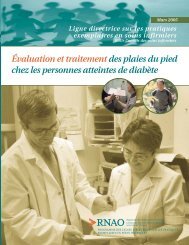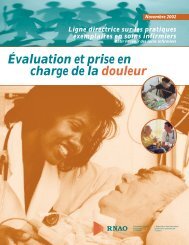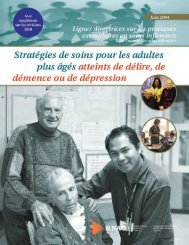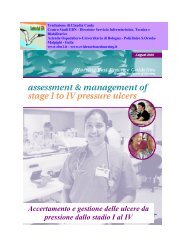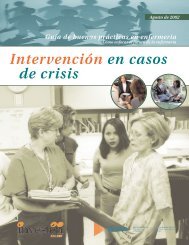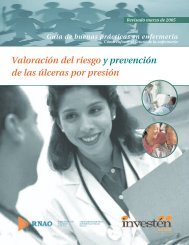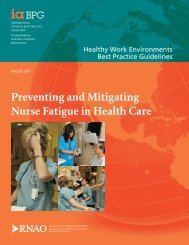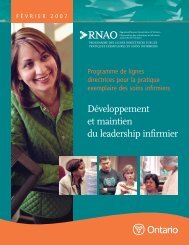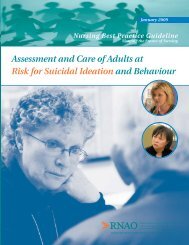Reducing Foot Complications for People with Diabetes - Registered ...
Reducing Foot Complications for People with Diabetes - Registered ...
Reducing Foot Complications for People with Diabetes - Registered ...
You also want an ePaper? Increase the reach of your titles
YUMPU automatically turns print PDFs into web optimized ePapers that Google loves.
<strong>Reducing</strong> <strong>Foot</strong> <strong>Complications</strong> <strong>for</strong> <strong>People</strong> <strong>with</strong> <strong>Diabetes</strong><br />
26<br />
There are other factors that are linked <strong>with</strong> the risk of foot ulcers such as smoking habits, an<br />
exercise injury of the insensate foot, visual difficulties and socioeconomic factors, etc. –<br />
these, however, are not consistently supported by research.<br />
History and presence of foot ulcers<br />
Significant evidence supports a causal link between the presence of peripheral neuropathy,<br />
foot de<strong>for</strong>mity, minor trauma and a previous history of foot ulceration and the development<br />
of future foot ulcers (Boyko et al., 1997; Reiber et al., 1999; Mayfield et al., 1998). Recurrence rates <strong>for</strong><br />
foot ulcers may be as high as 50-70% over 3-5 years (ADA, 1999; Apelqvist, Larsson & Agardh, 1993;<br />
Bloomgarden, 2001). <strong>Foot</strong> ulceration is associated <strong>with</strong> a 2 to 10.5 fold increased risk of lower<br />
extremity amputation (Mayfield et al., 1998) and a foot ulceration history is described as<br />
preceding approximately 85% of lower extremity amputations (Pecoraro, Reiber & Burgess, 1990).<br />
Nurses are frequently in contact <strong>with</strong> people <strong>with</strong> diabetes and have a prime opportunity to<br />
conduct a risk assessment <strong>for</strong> the development of foot ulcers and amputation, as well as to<br />
plan and direct interventions aimed at minimizing identified risk factors. In the presence of<br />
a positive history <strong>for</strong> foot ulcers, it is the consensus recommendation of this panel that the<br />
individual be assigned a “higher risk” status <strong>for</strong> foot ulceration and referral made to a<br />
diabetes foot specialist.<br />
Sensation<br />
There is strong evidence to support assessing foot sensation using a 10-gram, 5.07<br />
Semmes-Weinstein monofilament. The point at which a 10-gram filament buckles when<br />
pressure is applied is highly correlated to the loss of protective sensation in the presence of<br />
diabetes (ADA, 2001; Campbell et al., 2000; Frykberg et al., 2000; Hunt, 2001; Hutchinson et al., 2000; ICSI,<br />
2000; Lavery & Gazewood, 2000; McCabe, Stevenson & Dolan, 1998; NZGG, 2000; Smieja et al., 1999;<br />
Zangaro & Hull, 1999).<br />
There are discrepant recommendations regarding the number of sites on the foot to test <strong>with</strong><br />
the Semmes-Weinstein monofilament. One technical review (Mayfield & Sugarman, 2000) and one<br />
multi-center cross-sectorial study (Smieja et al., 1999) recommend testing more than one site<br />
on the foot to assess sensation. Some suggest that testing less sensitive areas such as the heel<br />
and the dorsum provide little additional in<strong>for</strong>mation (Mayfield & Sugarman, 2000). Smieja et al.<br />
(1999) conducted a clinical trial comparing eight-site versus four-site evaluation. They found<br />
that testing four rather than eight sites identified 90% of insensate feet. Based on these




